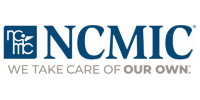Seneca Falls: At its meeting on June 27, 2015, New York Chiropractic College’s (NYCC) Board of Trustees honored Valerio Pasqua, DC, by electing him to the position of Trustee Emeritus. Dr. Pasqua joins Drs. Lewis Bazakos, Richard Carnival, and Nathan Novak, previously elected to this position in recognition of exemplary knowledge, skills, abilities, and outstanding service to the College.
- Home
- About
- Find a Doctor
- Membership
- Education
- News
- Newsletter
- Conventions & Symposiums
- Webinars
- Positive Press (F4CP) ↪
- Insurance and Medicare ⚿
- New Practitioners ⚿
- Center for Excellence ⚿
- Informative Links
- Mandated Reporter Training↪
- Leadership
- Officers and Regional Directors
- Districts
- District Officers ⚿
- District Map
- District 1 (Manhattan)
- District 2 (Brooklyn)
- District 3 (Queens)
- District 4 (Bronx)
- District 5 (Staten Island)
- District 6 (Nassau)
- District 7 (Suffolk)
- District 8 (Westchester)
- District 9 (Mid-Hudson)
- District 10 (Capital Region)
- District 11 (Mohawk Valley)
- District 12 (Central NY)
- District 13 (Binghamton Area)
- District 14 (Rockland County)
- District 15 (Finger Lakes)
- District 16 (Southern Tier)
- District 17 (Western NY)
- Committees
- Bylaws ⚿
- Code of Ethics ⚿
- Elections ⚿
- Advocacy
- Sponsors
- Classifieds




